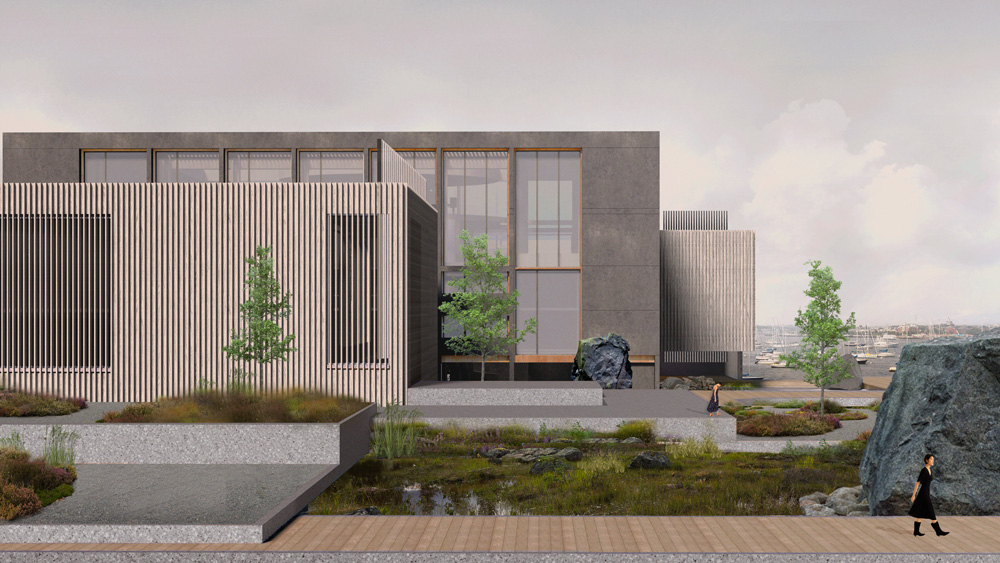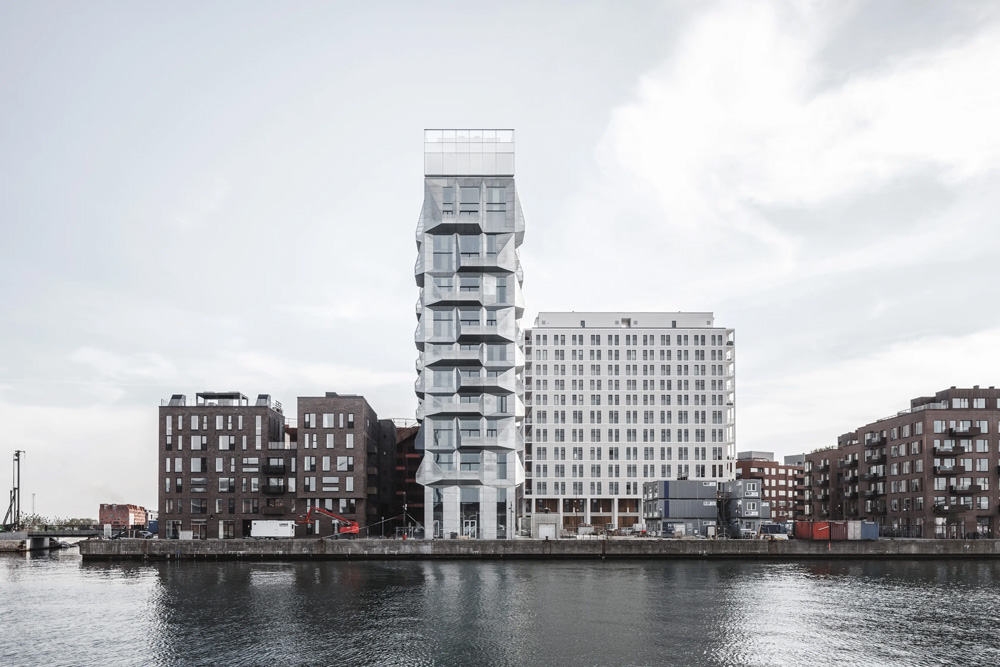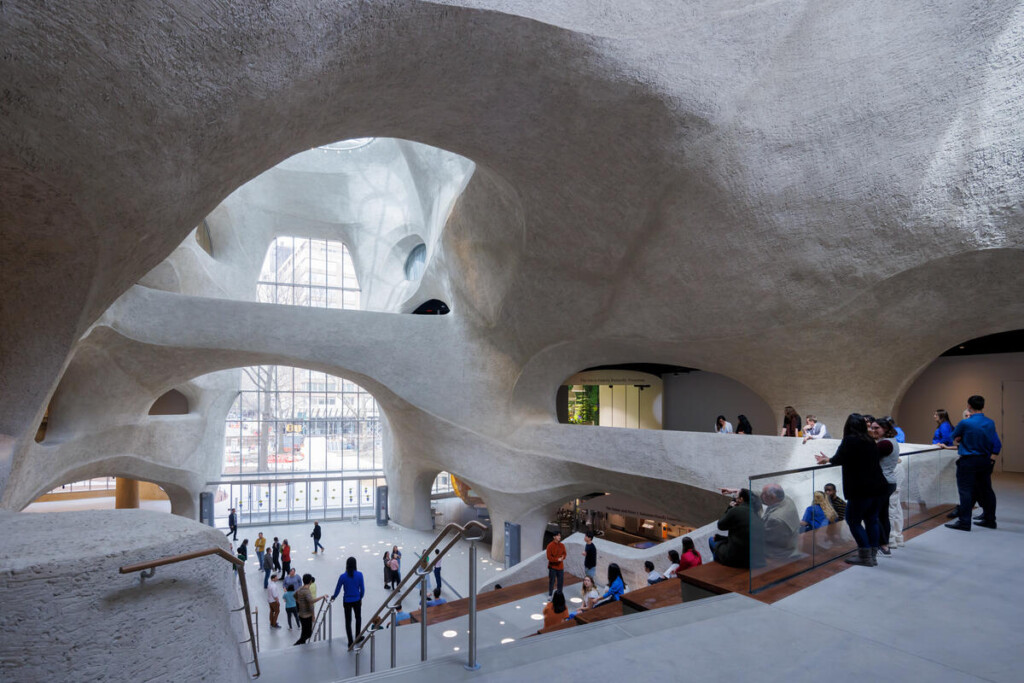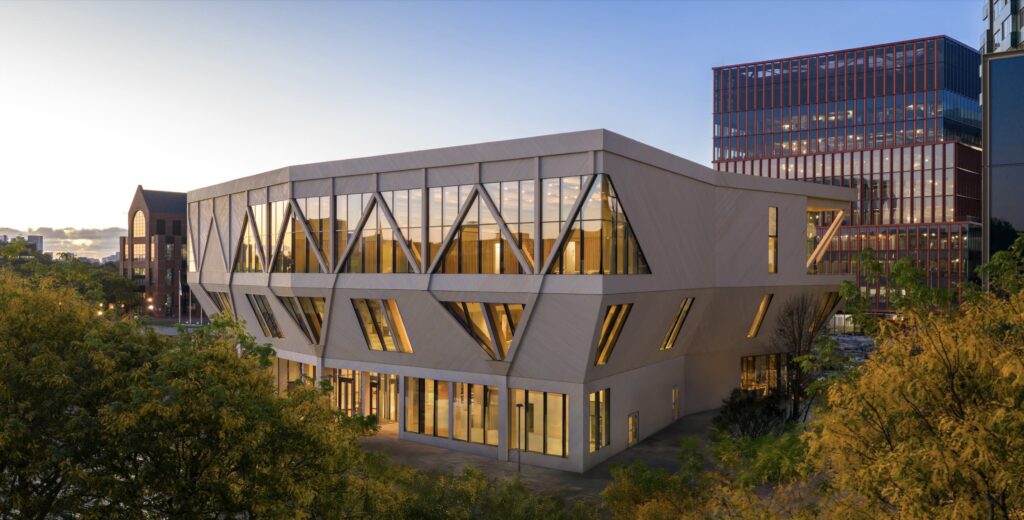Overlooking the Boston Harbor on Central Wharf stands the New England Aquarium, a local landmark and an icon of Brutalist architecture. It is also the subject of “Grafting the Aquarium,” a studio course held during the spring 2025 semester at the Harvard Graduate School of Design (GSD) that addressed complex issues of climate change, aging building stock, and institutional transformation—themes critical to this aquarium and numerous others throughout the world.
The studio’s name, “Grafting the Aquarium,” references the horticultural practice of grafting that has been embraced by Jeanne Gang (MArch ’93), founding partner of Studio Gang and professor in practice of architecture at the GSD, as a model for sustainable design and adaptive reuse. As described in her recent book The Art of Architectural Grafting (Park Books, 2024), “grafting is a design philosophy aimed at upcycling existing building stock by attaching new additions (scions) to old structures (rootstock) in a way that is advantageous to both. The practice of architectural grafting connects the two to create an expanded, flourishing, and distinctive work of architecture.” Rather than engage in the carbon-intensive cycle of demolishing existing buildings and rebuilding from scratch, grafting extends a structure’s life for greater capacity and utility. Taught by Gang and Eric Zuckerman (MArch ’18), project leader in Studio Gang’s New York City office, “Grafting the Aquarium” channeled this design approach to investigate possibilities for the New England Aquarium, a distinguished Boston organization with a celebrated past and an uncertain future.
The New England Aquarium, Then and Now
A cornerstone of the city’s waterfront revitalization plan, the New England Aquarium opened in 1969 to much fanfare. The robust concrete edifice, designed by Peter Chermayeff (MArch ’62) with Cambridge Seven Associates, sits a mere half mile from another Brutalist paragon, Boston City Hall (1963).1

The aquarium’s central feature, around which African and southern rockhopper penguins caper, is the cylindrical Giant Ocean Tank, 40-feet wide and four-stories tall, home to Caribbean marine life ranging in size from tiny reef fish to a 550-lb green sea turtle.2 Nearly five hundred thousand locals and tourists visited the aquarium the year after it opened; now, more than 1.3 million people annually frequent this regional attraction.
To accommodate more visitors and create space for new exhibits, the aquarium has grown in the past half-century, with the original building remaining largely untouched. The Marine Mammal Pavilion appended to the water-facing (east) facade accommodates sea lions; a metal-paneled addition to the west (by Schwartz/Silver Architects, completed in 1996) provides a harbor seal habitat, external ticketing windows, lobby, gift shop, café, and additional exhibit spaces; and the Simons IMAX Theater (2001), constructed on the southwestern portion of the wharf, boasts a six-story 3-D film screen and 378 seats.
Alongside these physical changes to its Central Wharf site, the New England Aquarium’s mission has evolved over the years, moving beyond the expectation for aquariums to serve, first and foremost, as venues for human entertainment. Aquariums previously offered a glimpse into elusive underwater realms; today, images and videos of these foreign ecosystems are accessible through the internet, with the click of a mouse. Furthermore, in recent decades, ethical concerns around keeping animals in captivity, especially incredibly sentient and intelligent species like dolphins and octopuses, have prompted shifts in aquarium programming, as has growing awareness of the deleterious impact of climate change on the ocean and its inhabitants. For these and other reasons, many aquariums—including the New England Aquarium—have become increasingly focused on research and conservation operations.
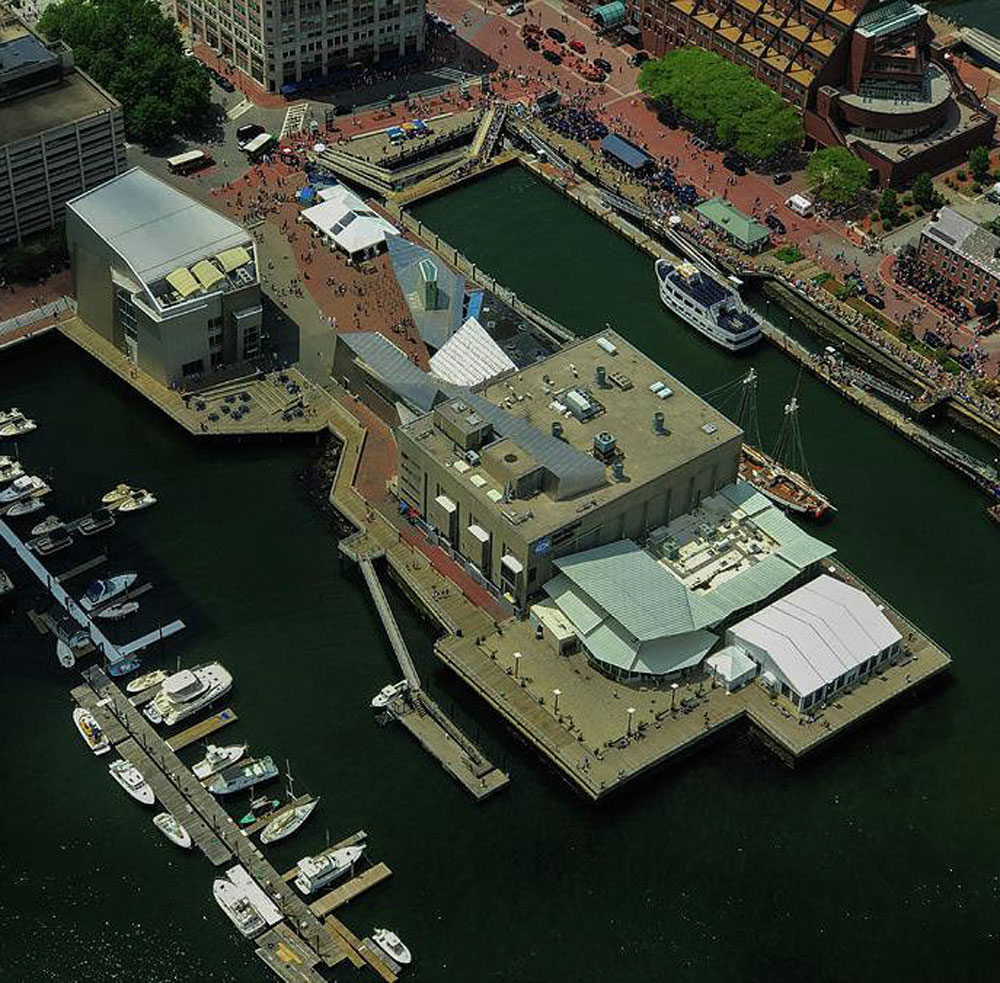
With this expanded scope come financial and spatial demands that exceed the limited facilities currently available at Central Wharf. Thus, the aquarium’s rescue and rehabilitation site in Quincy, 10 miles south of Boston, houses ethical breeding programs and acute care for injured animals (whether they be ailing residents or cold-stunned wild turtles). Another struture on the coast of Maine serves as homebase for a multi-decade North Atlantic Right Whale research project, one of the aquarium’s many marine science efforts. Mindful of the need for more revenue and additional space, aquarium leadership is keen to explore potentially advantageous programming and partnership opportunities beyond those that currently exist.
Underscoring the mandate for increased funding is the stark reality that the New England Aquarium’s Central Wharf properties require interventions to address the near- and long-term impacts of climate change—in particular, rising sea levels and storm surges. These days the aquarium experiences regular basement flooding, which threatens the animals’ mechanical and filtration life-support systems, and erosion around the Simons Theater’s foundational pilings requires mitigation. Recent resiliency planning calls for flood protection systems to withstand the inevitable tidal and storm flooding that will accompany the rising seas, predicted by 2050 to exceed four feet over current day levels. This knowledge goes hand in hand with climate-driven questions around how and when to protect against, accommodate, or retreat from the water. Consequently, in tandem with refining the institution’s mission and increasing revenue, aquarium officials must contend with aging buildings that need attention to remain operational and survive into the future.
Grafting the 21st-Century Aquarium
Under the guidance of Gang and Zuckerman, twelve GSD students from the master of architecture, landscape architecture, and urban design programs undertook an in-depth analysis of the New England Aquarium. Visits to its facilities, discussions with its leadership, targeted design exercises, and expert-led workshops informed the students about the aquarium and its site as they grappled with the complex themes surrounding the project, ranging from considerations of embodied carbon and vulnerability to sea level rise to designing for biodiversity and non-human species.
The main aquarium building posed an additional challenge. Consultations with Chermayeff provided rare insight into the design intent that shaped the concrete building, the first of the many aquariums in the architect’s portfolio. With its carefully choreographed interior circulation (winding around the Giant Ocean Tank) and its distinct, otherworldly interior (sans daylight, with strategic accent lighting), the New England Aquarium set the standard for Chermayeff’s aquariums that followed, including the National Aquarium (1981) in Baltimore, Maryland, and the Oceanarium (1998) in Lisbon, Portugal. Thus, as they devised their grafting operations to address the New England Aquarium’s future needs, students had to parse Chermayeff’s original vision for the building alongside its historic significance, material nature, environmental impact, and future needs.
As a design philosophy, architectural grafting is especially well suited to urban contexts, which are often marked by decades—if not centuries—of accretion. In her book, Gang notes that, in terms of environmental impact, “all renovations are better than building new. However, certain approaches prove more effective in reducing carbon pollution than others. In order to end greenhouse emissions in the critical period leading up to 2050, delaying the demolition of buildings saves the most carbon over any other single strategy, followed closely by increasing existing buildings’ intensity of use.”3 This holds true for the Brutalist New England Aquarium, making it and its Central Wharf campus perfect candidates for grafting. Following a strategic assessment of the existing site, the benefits it brings, and the challenges it faces, the designer then crafts sustainable solutions that honor the past, minimize carbon expenditure and waste, and build toward a resilient future. This compelling approach merges preservation and innovation to create a new whole greater than its parts.
Building on the concept of grafting, the students’ projects address climatic, economic, and spatial concerns, designs differ in terms of resiliency strategies, envisioned revenue streams, and physical interventions within the Central Wharf site.4 Yet, despite the diversity of approaches, the projects all position architecture as a key force in responding to these pressing issues and in shaping the New England Aquarium’s future. Whether establishing a greater connection with the city or the islands offshore, or highlighting education and animal care, the resulting designs foreground the aquarium as a steward of the marine environment and its resident species, the health of which impacts us all.
Diverse Approaches for a New Age
“Aquatic Symphony”
“Flood-Ready Common Ground”
“Landform to Islands”
“Spectacle & Care”
- Cambridge Seven continues to work with the New England Aquarium. ↩︎
- The aquarium opened in 1969, before completion of the Giant Ocean Tank, which became operational the following year. ↩︎
- Jeanne Gang, The Art of Architectural Grafting (Park Books, 2024), 17. ↩︎
- In May, the students presented their final designs at an end-of-semester review held at the GSD’s Gund Hall. Aside from Gang and Zuckerman, the jury during included Chermayeff, New England Aquarium vice-president of campus operations and facilities Ferris Batie, and GSD faculty members Iman Fayyad, assistant professor of architecture; David Fixler, lecturer in architecture; Stephen Gray, urban design program director; Gary Hilderbrand, Peter Louis Hornbeck Professor in practice of landscape architecture; Toshiko Mori, Robert P. Hubbard Professor in architecture; and Chris Reed, professor in practice of landscape architecture and co-director of the master of landscape architecture in urban design program. Working in pairs or individually, the students proposed an array of design schemes for the New England Aquarium. ↩︎
